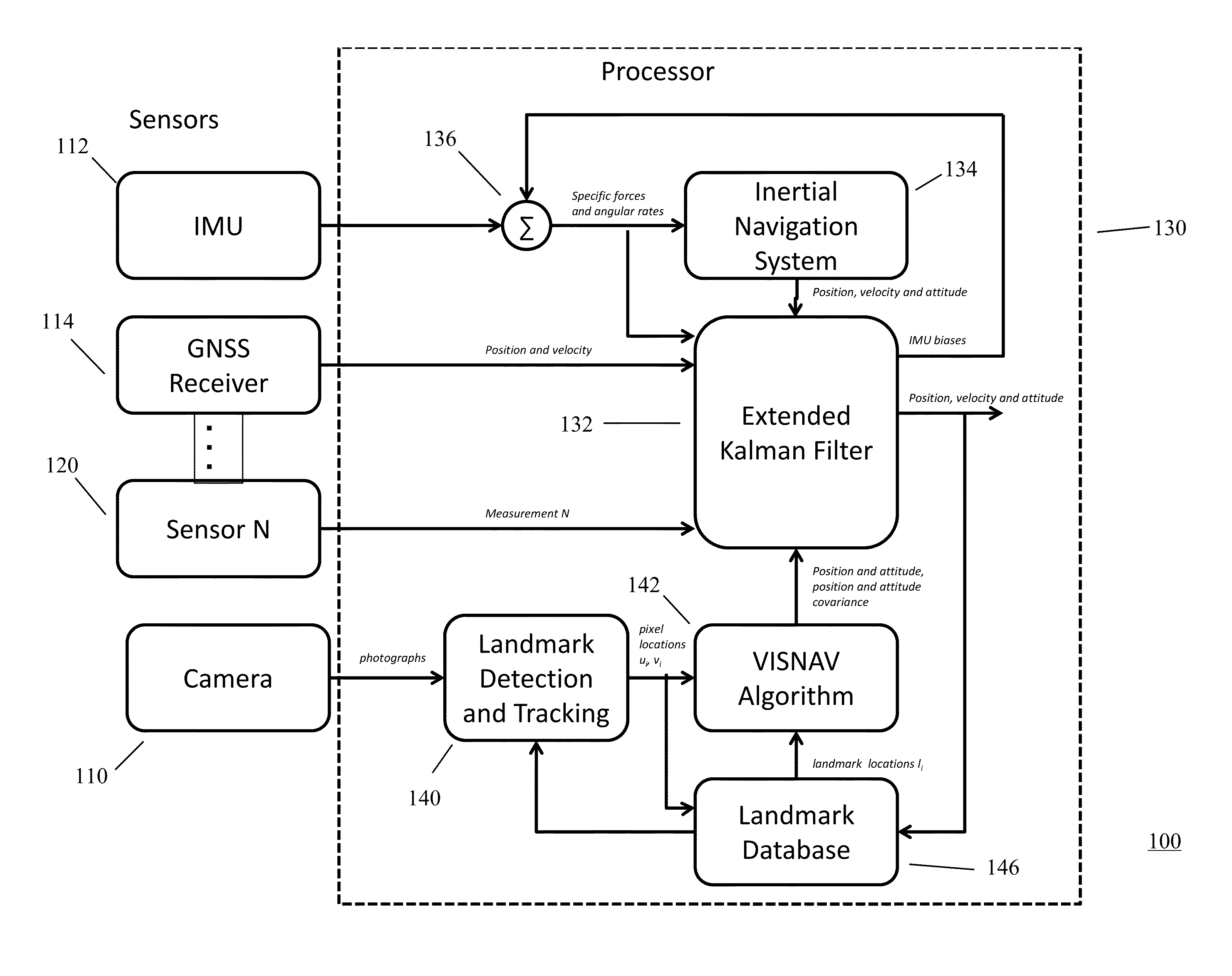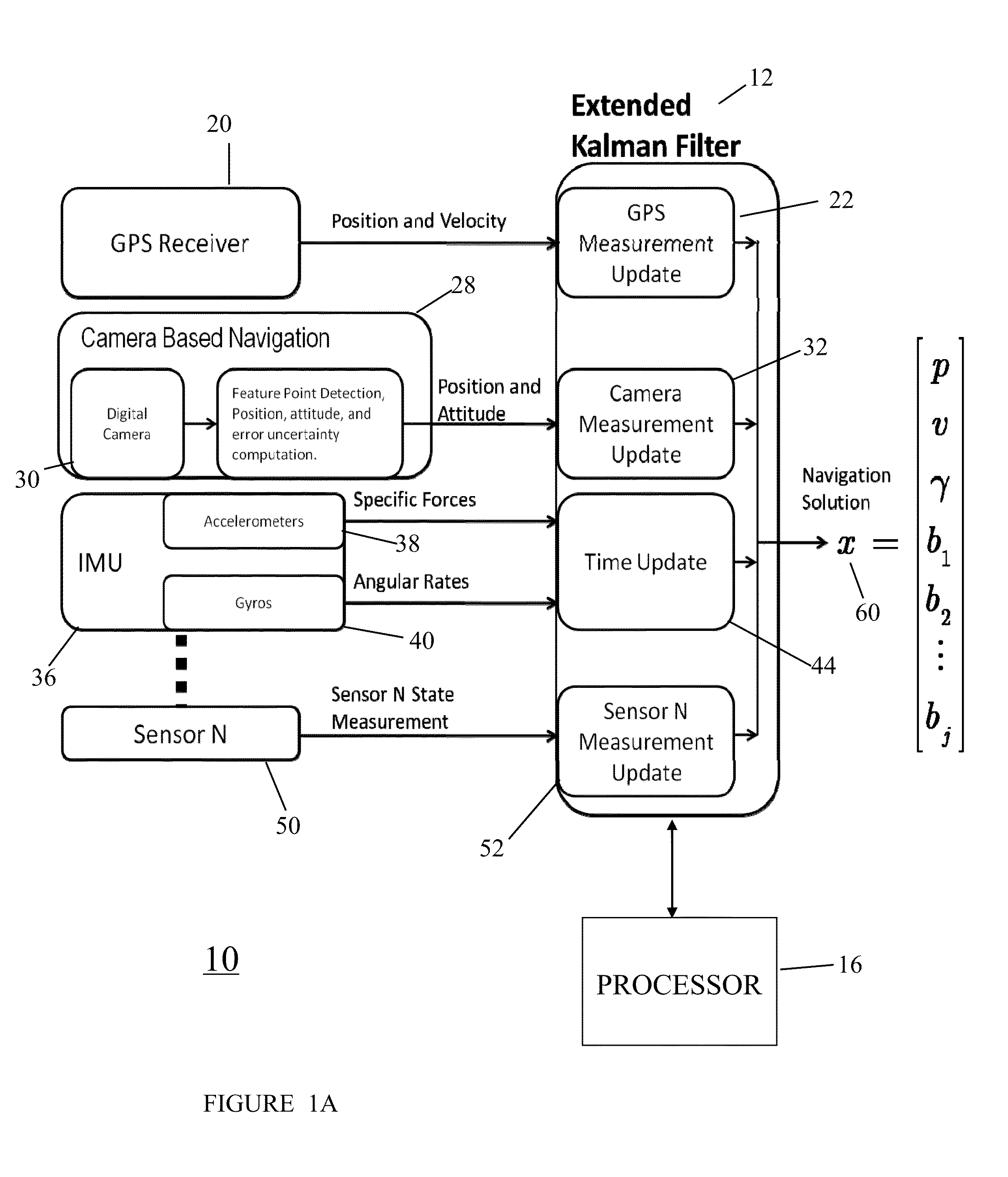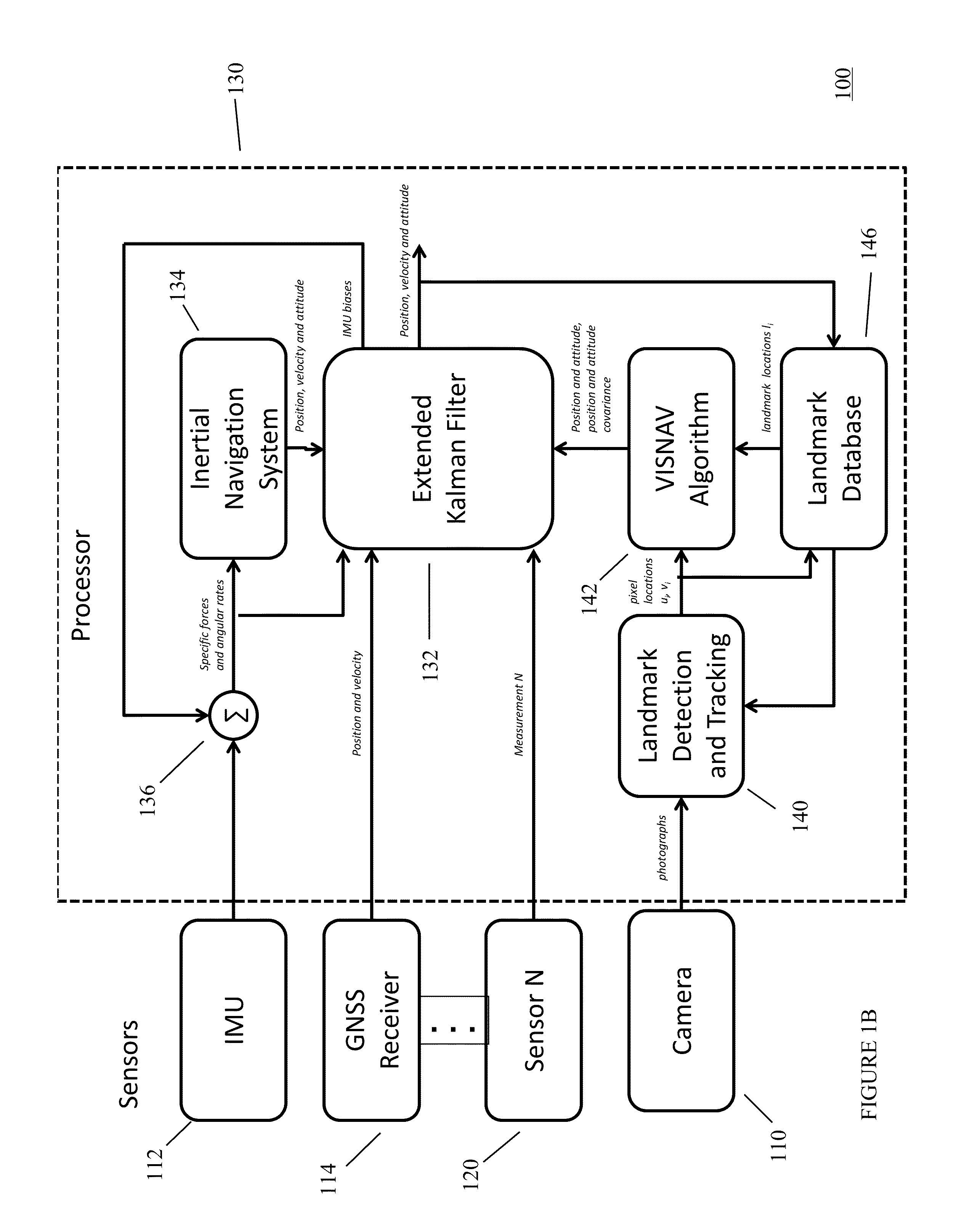System to use digital cameras and other sensors in navigation
a technology of digital cameras and sensors, applied in traffic control systems, navigation instruments, instruments, etc., can solve the problems of cost, computational complexity of slam and visnav, and incomplete work on estimating the covariance of projective transformation
- Summary
- Abstract
- Description
- Claims
- Application Information
AI Technical Summary
Problems solved by technology
Method used
Image
Examples
Embodiment Construction
[0036]One preferred embodiment of the navigation system of the present invention includes a GPS receiver, an Inertial Measurement Unit, a Magnetometer triad, a digital camera, and a microprocessor. Data is collected and the algorithms that make up the invention were applied in post-processing. In one embodiment, a van was driven through Liberty Station in San Diego, Calif. for an hour. Data from all of the sensors was recorded and used in post-processing to validate the sensor fusion algorithms that have been developed.
[0037]This invention can be used in all military or non-military applications when navigation needs to occur in a GPS-denied environment, such as indoors, underground, or underneath dense foliage. It can also be used as a backup to GPS to provide robust navigation in the event that GPS becomes unavailable.
[0038]The invention estimates a navigation solution based on inputs from different sensors, including at least a digital camera. Other sensors that may be included a...
PUM
 Login to View More
Login to View More Abstract
Description
Claims
Application Information
 Login to View More
Login to View More - R&D
- Intellectual Property
- Life Sciences
- Materials
- Tech Scout
- Unparalleled Data Quality
- Higher Quality Content
- 60% Fewer Hallucinations
Browse by: Latest US Patents, China's latest patents, Technical Efficacy Thesaurus, Application Domain, Technology Topic, Popular Technical Reports.
© 2025 PatSnap. All rights reserved.Legal|Privacy policy|Modern Slavery Act Transparency Statement|Sitemap|About US| Contact US: help@patsnap.com



